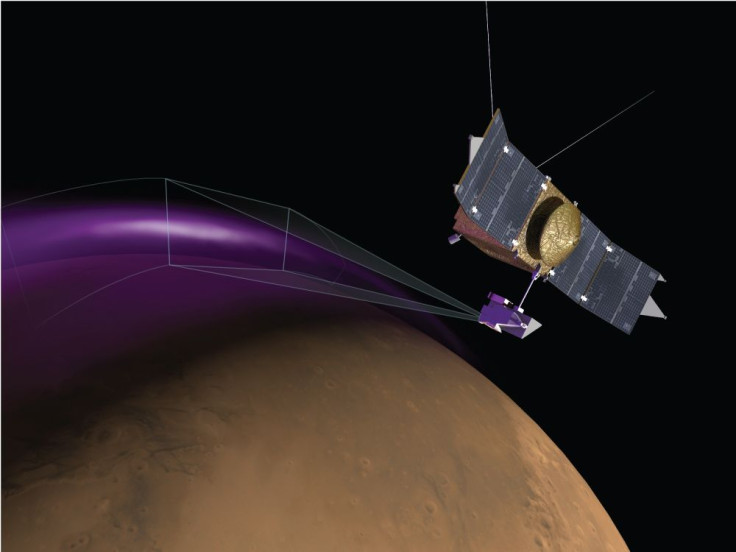Mars’ Ancient Magnetic Field Might Have Formed Earlier Than Previously Thought, Scientists Reveal
KEY POINTS
- Researchers discovered the timeline of Mars' magnetic field
- The dynamo is responsible for the formation of the magnetic field
- Mars' magnetic field existed earlier than previously thought
A group of researchers was able to discover the new timeline of Mars’ ancient magnetic field. According to the researchers, the magnetic field on the Red Planet may have formed much earlier than previously thought.
The new study was carried out by researchers from the University of British Columbia using data collected by NASA’s Mars Atmospheric and Volatile Evolution (MAVEN) spacecraft. Their findings were presented in a new paper published in the journal Science Advances.
The development of a magnetic field plays a huge role in the evolution of a planet. It forms through a dynamo, which is a flow of molten metal within the planet's core that produces an electrical current. On Earth, the dynamo is responsible for making needles of compasses point north.
On Mars, however, data collected on large basins that formed about 3.9 billion years ago did not show signs of magnetism, which indicates that the planet’s magnetic field has been extinct for a long time. Many scientists believe that Mars’ current state was caused by the disappearance of its magnetic field.
However, after analyzing new information collected by Maven, the researchers detected signs of low-intensity magnetic fields near the Borealis Basin, which is located in Mars’ northern hemisphere. This region, which formed about 4.5 billion years ago, is regarded as one of the oldest features on Mars.
Aside from the Borealis Basin, the researchers also came across evidence of a magnetic field in the Lucus Planum lava flow, which formed about 3.7 billion years ago.
As noted by the researchers, the discovery of traces of magnetism in these regions provides a clear timeline regarding the magnetic field activity on Mars. By studying the behavior of Mars’ dynamo, the researchers are hoping to uncover valuable information regarding the planet’s evolution and how it ended up as a barren and hostile world.
“We find that the Martian dynamo operated at 4.5 billion and 3.7 billion years ago,” Anna Mittleholz, the lead author of the study, said in a statement. “Dynamo timing is a big part of a planet's evolution, and what we find is very different from what we have thought so far.”
“The dynamo tells us something about the planet's thermal history, its evolution, and how it got to where it is today, and it is unique for each of the terrestrial planets -- Earth, Mars, Venus and Mercury,” she added.

© Copyright IBTimes 2024. All rights reserved.





















